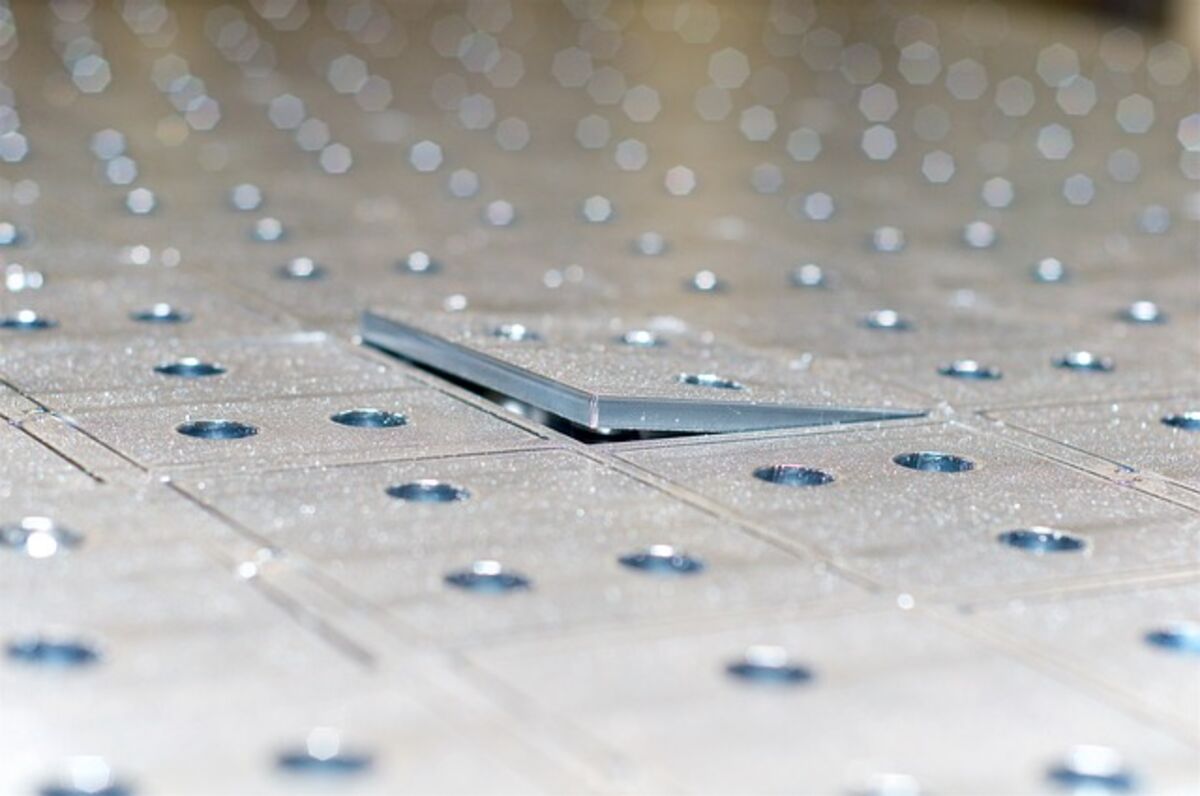Before you roll up your sleeves and start designing, it’s essential to familiarize yourself with the basics of sheet metal fabrication. This includes understanding the properties of different metals, the tools you’ll need, and the techniques used in the process. Let’s delve deeper into each of these foundational aspects. Sort out the custom sheet metal parts.
Understanding Sheet Metal Properties
Sheet metal comes in a variety of materials, each with unique characteristics that influence its use in fabrication projects. Understanding these properties is vital for selecting the right material for your custom part.
- Steel: Known for its exceptional strength and durability, steel is often the go-to material for structural components. It can withstand significant stress and is ideal for projects requiring robust support.
- Aluminum: This material is prized for its lightweight nature and resistance to corrosion, making it perfect for applications where weight is a concern, such as the automotive and aerospace industries. It’s also relatively easy to work with, which is a plus for beginners.
- Brass and Copper: These metals are favored for their aesthetic appeal and excellent conductivity. Brass and copper are often used in decorative pieces and electrical applications due to their ability to conduct electricity efficiently.
- Stainless Steel: Offering a blend of strength, corrosion resistance, and a sleek appearance, stainless steel is a popular choice in both industrial and consumer applications. Its resistance to rust makes it ideal for outdoor use.
Essential Tools for Sheet Metal Fabrication
To embark on your sheet metal design journey, you’ll need to gather some essential tools. While the list may seem daunting at first, you can start with a few basics and expand your toolkit as needed.
- Shears or Snips: These tools are crucial for cutting sheet metal to the desired size. They come in various types, including straight-cut, left-cut, and right-cut snips, each suited for different cutting directions and angles.
- Brake or Bender: A brake is used to bend sheet metal into precise shapes. It’s essential for forming angles and curves. Depending on your project, you might choose a manual or hydraulic brake.
- Drill: A good drill is indispensable for creating holes or slots in metal. Consider investing in a set of drill bits specifically designed for metal to ensure clean, precise holes.
- Measuring Tools: Accurate measurements are the backbone of any successful design. A sturdy ruler, calipers for precise measurements, and a protractor for angles are invaluable for ensuring your cuts and bends are exact.
- Clamps and Vices: These tools are crucial for holding the metal securely while you work, ensuring safety and accuracy.
- Safety Gear: Don’t forget safety goggles, gloves, and ear protection to keep yourself safe while working with sheet metal.
Designing Your Custom Part
Now that you’re equipped with the basics, let’s dive into the design process. This part is where your creativity can shine, and careful planning ensures your project turns out just as you envision.
Sketch Your Ideas
Begin with the creative process by sketching your design on paper. This initial step allows you to visualize the final product and serves as a roadmap for your project.
- Conceptualize: Start with rough sketches to get your ideas down. Focus on the overall shape and function of your part without getting bogged down in details.
- Refine: Once you have a basic concept, refine your sketches. Add dimensions, materials, and notes about how pieces will fit together. This will help you identify potential issues before moving to the next step.
- Explore Alternatives: Don’t be afraid to sketch multiple versions of your design. Exploring different possibilities can lead to innovative solutions and improve your final product.
Use Computer-Aided Design (CAD) Software
Once you have a rough sketch, it’s time to bring your design to life using CAD software. Programs like AutoCAD or SolidWorks allow you to create precise digital models of your part. This step is crucial for ensuring that everything fits together perfectly.
- Choose the Right Software: Depending on your project’s complexity and your familiarity with CAD, select a software that meets your needs. AutoCAD is great for 2D designs, while SolidWorks excels in 3D modeling.
- Learn Through Tutorials: If you’re new to CAD, take advantage of online tutorials and courses. They can speed up the learning process and help you understand essential features.
- Iterate and Improve: Use CAD software to iterate on your design. Make adjustments as needed, and use the software’s simulation tools to test how the part will perform under different conditions.
- Create Detailed Drawings: Generate detailed drawings from your CAD model, including dimensions and annotations. These drawings will be invaluable during the fabrication process.
Consider Design for Manufacturability (DFM)
When designing your part, it’s important to think about how it will be manufactured. This means considering factors like ease of fabrication, material usage, and the capabilities of your tools.
- Simplify Complex Designs: Avoid overly complex designs that might be difficult to produce with the tools at hand. Simplicity can often lead to more reliable and cost-effective parts.
- Plan for Efficient Material Use: Minimize waste by planning the layout of your parts on the sheet metal efficiently. Consider nesting parts to maximize material usage.
- Account for Tolerances: Understand the tolerances of your tools and materials. Design with these tolerances in mind to ensure parts fit together correctly without additional adjustments.
- Consider Assembly: Think about how the parts will be assembled. Design for easy assembly, considering factors like alignment features and the accessibility of fasteners.
Bringing Your Design to Life
Once your design is complete, it’s time to turn those digital plans into a tangible product. This stage involves careful execution of cutting, shaping, and assembling your sheet metal parts.
Cutting and Shaping
Using your shears or snips, carefully cut the metal according to your design. Take your time to ensure accuracy, as mistakes at this stage can be costly.
- Follow Your Drawings: Use the detailed drawings from your CAD model as a guide. Double-check measurements before making cuts.
- Safety First: Always wear gloves and eye protection when working with sheet metal to avoid injuries. Metal edges can be sharp, and small metal fragments can fly during cutting.
- Choose the Right Tool: Depending on the thickness and type of metal, select the appropriate cutting tool. For thicker metals, consider using a power shear or plasma cutter for cleaner cuts.
- Practice Precision: Take your time and practice precision. A well-executed cut sets the foundation for the rest of your project.
Bending and Forming
Next, use your brake or bender to shape the metal. This can be a bit tricky, so it’s a good idea to practice on some scrap pieces first.
- Understand Bend Allowances: Account for the bend radius in your design, as metal will stretch and thin out during bending. Adjust your dimensions to ensure the final part matches your design.
- Use Jigs and Fixtures: Consider using jigs or fixtures to hold the metal in place while bending. This can improve accuracy and repeatability.
- Take It Slow: Bending metal requires patience and precision. Make gradual bends and check your progress frequently to avoid over-bending.
- Test with Scrap Metal: Before bending your final piece, practice on scrap metal to refine your technique and avoid costly mistakes.
Assembling Your Part
With all the pieces cut and bent, it’s time to assemble your part. This may involve welding, riveting, or using fasteners to join the pieces together.
- Choose the Right Joining Method: Decide whether welding, riveting, or fasteners are best for your project based on the desired strength and permanence of the joints.
- Prepare Surfaces for Joining: Ensure that surfaces to be joined are clean and free from contaminants. This will improve the strength and quality of the joints.
- Test Fit: Before making permanent joins, test fit all pieces to ensure they align correctly. Make any necessary adjustments before final assembly.
- Secure with Precision: Whether welding or using fasteners, ensure that each joint is secure and aligned with your design specifications.
Finishing Touches
With your part assembled, it’s time for the finishing touches. These final steps can enhance the appearance and longevity of your custom sheet metal part.
Deburring and Smoothing
Sheet metal edges can be sharp, so it’s important to deburr and smooth them out. Use a file or sandpaper to remove any rough edges and ensure a clean finish.
- Ensure Safety and Functionality: Deburring not only improves the safety of handling your part but also enhances its functionality by preventing interference between moving parts.
- Use the Right Tools: Employ files, sandpaper, or deburring tools to achieve a smooth finish. Work systematically, focusing on all edges and corners.
- Check for Smoothness: Run your fingers along the edges to check for any remaining rough spots. Continue deburring until the edges are smooth to the touch.
- Consider Surface Texture: Depending on the part’s application, you may want to achieve a specific surface texture. Use finer grit sandpaper for a smoother finish if needed.
Surface Treatment
Finally, consider applying a surface treatment to protect your part from corrosion and enhance its appearance. This could be painting, powder coating, or anodizing, depending on the material.
- Choose the Right Treatment: Select a surface treatment that matches the material and intended use of your part. For example, anodizing is excellent for aluminum, while powder coating works well for steel.
- Prepare the Surface: Before applying any treatment, ensure the surface is clean and free of oil, dirt, or other contaminants. This ensures proper adhesion and a quality finish.
- Apply uniformly: Follow the manufacturer’s instructions for applying the surface treatment. Aim for an even coat to achieve a professional finish.
- Consider Aesthetic Options: Surface treatments can also enhance the aesthetic appeal of your part. Consider different colors or textures to achieve the desired look.
Tips for Success
Designing custom sheet metal parts doesn’t have to be intimidating. With some preparation and practice, you’ll be creating precision sheet metal pieces like a pro.
- Double-Check Measurements: Before cutting or bending, double-check your measurements to avoid costly mistakes. Accuracy is key to a successful project.
- Start Simple: If you’re new to sheet metal design, begin with a simple project. This will help you build confidence and skills before tackling more complex designs.
- Learn from Mistakes: Don’t be afraid to experiment and learn from your mistakes. Each project is an opportunity to improve your skills and gain valuable experience.
- Keep Innovating: Use each project as a chance to innovate and try new techniques. Experimenting with different materials, designs, and methods can lead to unique and successful creations.
So grab your tools, sketch out your ideas, and get started on your next project! With dedication and creativity, the possibilities in sheet metal design are endless.


